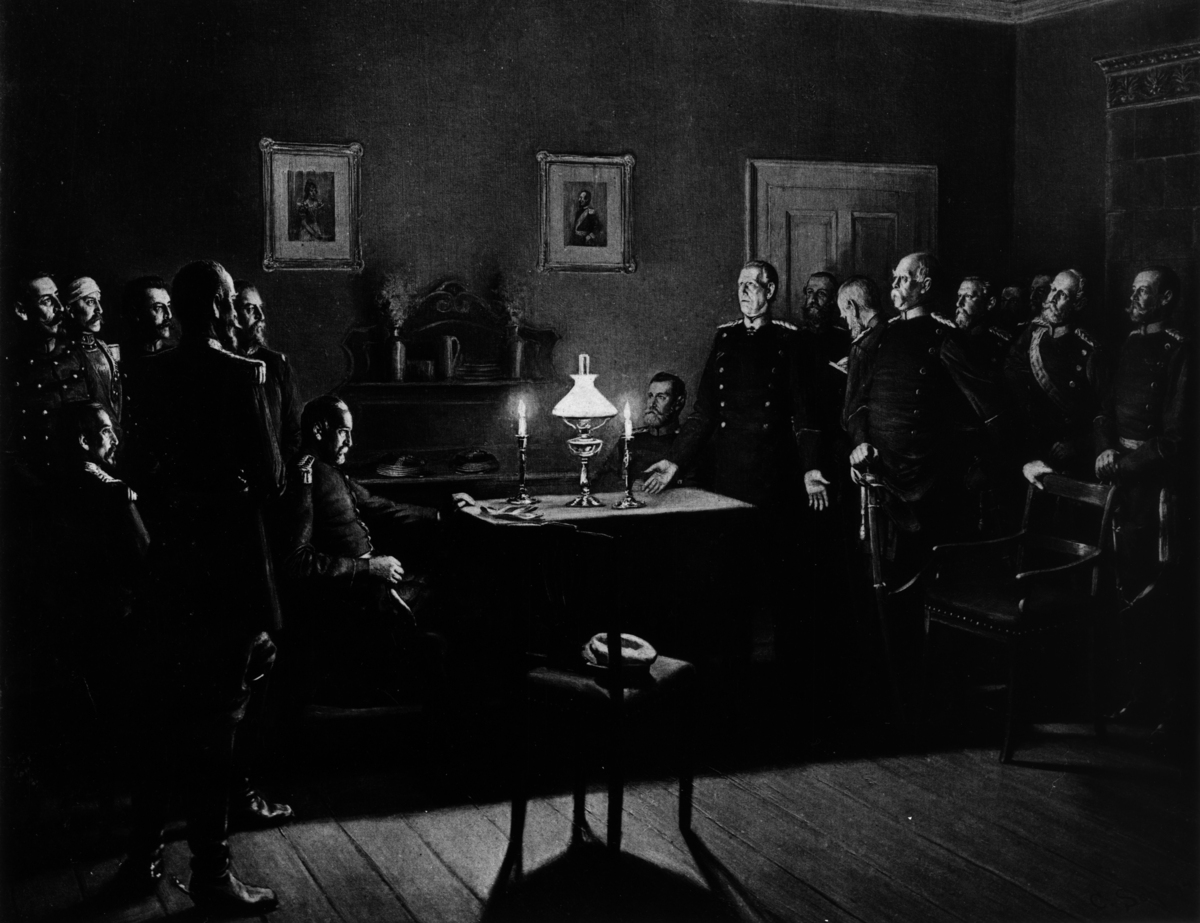Abstract
The victory of German forces over the French at the Battle of Sedan
(September 1–2, 1870) effectively decided the outcome of the
Franco-Prussian War of 1870–71. French casualties on September 1
included approximately 3,000 dead, 14,000 wounded, and 21,000 captured.
German losses were estimated at approximately 2,300 killed, 6,000
wounded, and 700 captured or missing in action. This 1894 painting
depicts the discussion of capitulation terms in a villa in Donchéry (a
small town commanding a bridge over the River Meuse below Sedan) between
6pm and 9pm on September 1, 1870. It shows the Prussian victor, Helmuth
von Moltke (standing, right, beside Bismarck) and the French General
Emmanuel Félix de Wimpffen (1811–1884), sitting at the left. Seated to
Moltke’s right is Prussian Quartermaster-General von Podbielski. Among
the officers standing behind Moltke is Count von Nostitz, who is taking
notes. In the shadows behind de Wimpffen are French General Henri Pierre
Castelnau and other Frenchmen, including a cuirassier, Captain d’Orcey,
who allegedly had “observant eyes and a retentive memory.” According to
historical accounts, when de Wimpffen attempted to surrender only the
fortress of Sedan, the French artillery, and those soldiers already
taken prisoner, Moltke insisted on his original terms: “The entire army,
with arms and baggage.” De Wimpffen replied that these terms were “very
hard” and that “We merit better treatment.” But Moltke “coldly persisted
in his demand,” remembered Bismarck. The attentive d’Orcet put it more
strongly: “Von Moltke was pitiless.” French Emperor Napoleon III
(1808–1873) surrendered himself and the rest of his troops (about 83,000
men) the next morning.
